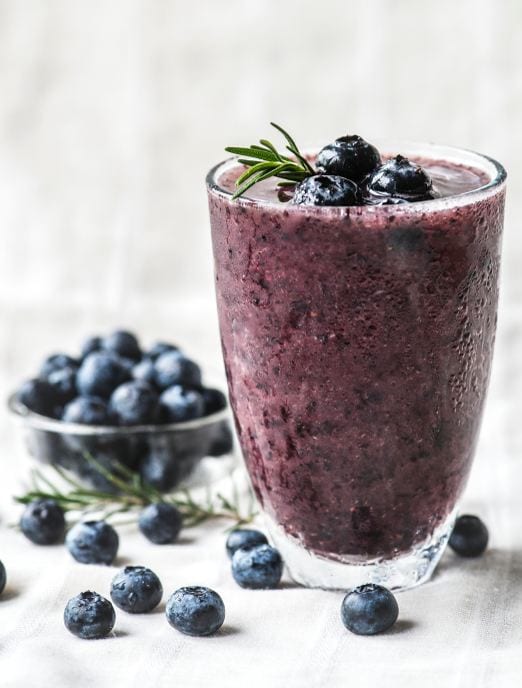Anthocyanins Losses during Blueberry Juice Processing
Factors influencing anthocyanin losses during blueberry juice processing and potential mitigation strategies to prevent their losses
Funding for this project (# 2016-07259) was provided by the United States Department of Agriculture (USDA) National Institute of Food and Agriculture (NIFA) Higher Education Challenge (HEC) grant program. This project is in collaboration with the University of Arkansas, Texas Tech University, and The Borlaug Institute at Texas A&M University.

Overview
Blueberries are a rich source of polyphenols, especially anthocyanins that are purported to have many health-promoting effects. Due to limited seasonal availability and shelf-life, blueberries are commonly processed into shelf-stable products such as juices. Unfortunately, marked losses of anthocyanins occur during juice processing as a result of various physical and biological factors. Novel alterations in processing unit operations can be taken to mitigate anthocyanin losses and produce juice with higher levels of health-promoting compounds.
Objectives
- Identify and define the major anthocyanins in blueberries
- Identify steps in juice processing where anthocyanin losses occur
- Identify and define factors responsible for anthocyanin losses
- Identify steps to mitigate anthocyanin losses
Level of Instruction
Graduate
Learner Prerequisite Knowledge
Common berry polyphenols, basic food preservation, juice processing
Instructor Preparation/Notes
Read all associated reading materials, have existing knowledge of the subject matter
Instructions
Learner time required: this lesson should take a well-informed student one to two hours to complete.
Read through the materials and watch the video. At the end there is a self-exam that you can use to assess if you have met the objectives.
Learning Materials
Videos:
- Anthocyanin Losses during Blueberry Juice Processing Video
- Skrede et al. (2000). Changes in Anthocyanins and Polyphenolics during Juice Processing of Highbush Blueberries (Vaccinium corymbosum L.). J. Food Sci. 65:357-364.
- Howard et al. (2012). Processing and storage Effect on Berry Polyphenols: Challenges and Implications for Bioactive Properties. J. Agric. Food Chem. 60:6678-6693.
Assessment – take the self-assessment exam
Luke Howard
Ph.D.
Professor, Department of Food Science
University of Arkansas
